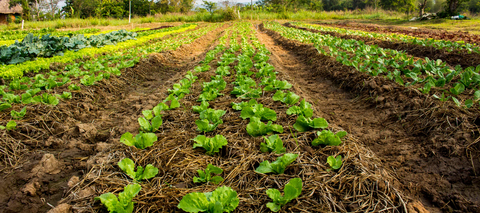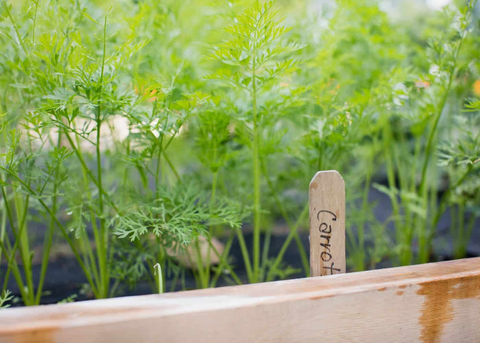Imagine stepping into your garden, plucking fresh herbs, and infusing your dishes with vibrant flavors and aromas. If you're a culinary enthusiast, this dream can become a reality with a raised bed herb garden. These elevated spaces not only make gardening accessible but also provide an ideal environment for cultivating a diverse range of herbs. In this comprehensive guide, we will explore the world of raised bed herb gardens, uncovering their benefits, techniques for success, and the essential herbs to consider for your flavorful garden. The following content also has some reference value for raised garden beds.

The Advantages of Raised Bed Herb Gardens
Raised bed herb gardens have gained popularity for several compelling reasons:
1. Improved Drainage
One of the primary advantages of raised beds is enhanced drainage. The raised structure allows excess water to flow away more easily, preventing waterlogged soil that can harm herb roots.
2. Soil Control
With raised beds, you have greater control over your soil composition. You can customize the soil mixture to match the specific needs of your herbs, ensuring optimal nutrition and pH levels.
3. Accessibility
Raised beds are higher off the ground, making gardening more accessible. You won't need to bend or kneel, which is especially beneficial for individuals with mobility issues.
4. Pest Management
Elevated beds can be easier to protect from certain pests, such as ground-dwelling insects. Installing barriers like hardware cloth at the bed's base can deter these pests from reaching your herbs.
5. Aesthetic Appeal
The raised structure of these beds adds dimension and character to your garden, creating an appealing and organized landscape. You can design and arrange your raised herb beds to create a visually pleasing layout.
Selecting the Right Location for Your Raised Herb Beds
Before you begin planting your herb garden, choose the perfect location for your raised beds. Consider the following factors:
1. Sunlight
Most herbs thrive in full sun, which typically means at least 6 to 8 hours of direct sunlight per day. Observe your garden's sun patterns and select a location that provides the required amount of sunlight for your chosen herbs.
2. Soil Quality
The quality of your existing soil still matters even in raised beds. Test the soil to determine its pH and levels of nutrients. This information will guide you in preparing the right soil mixture for your herbs.
3. Accessibility
Ensure your raised herb beds are easily accessible. You should be able to comfortably reach them for planting, watering, harvesting, and maintenance. Consider pathways and proximity to water sources.
Building Your Raised Herb Beds
Once you've selected the ideal location, it's time to build your raised herb beds. Here's a step-by-step guide:
1. Materials
Select high-quality materials for your raised beds. Common choices include:
- Wood: Cedar and redwood are excellent options due to their natural resistance to decay and insects. Avoid treated lumber, as it may contain harmful chemicals.
- Stone or Brick: These materials provide a timeless and rustic look to your garden but can be more labor-intensive to install.
- Composite Materials: If you prefer a low-maintenance option, consider composite boards made from recycled materials.
2. Dimensions
Determine the size and shape of your raised beds based on your garden's layout and the space available. Most raised beds are rectangular or square, but you can get creative with curves and angles.
3. Construction
Assemble your raised beds according to your chosen materials. For wood, construct the frame by securing the boards at the corners with screws. Ensure that the bed is level and secure.
4. Soil Mixture
Fill your raised beds with a well-balanced soil mixture. A typical mixture consists of garden soil, compost, and organic matter. Aim for a depth of at least 6 to 12 inches of soil.
5. Irrigation
Consider your watering system. Drip irrigation or soaker hoses are efficient options for raised beds. Ensure that your beds receive consistent moisture, especially during dry spells.
Essential Herbs for Your Raised Herb Garden
Now comes the exciting part: choosing the herbs that will grace your raised beds and enhance your culinary endeavors. Here are some essential herbs to consider:
1. Basil
Basil is a versatile herb with a delightful aroma and a key ingredient in many dishes, including pesto, pasta, and salads. It thrives in full sun and well-draining soil.
2. Rosemary
Rosemary is known for its robust flavor and aromatic leaves. It's an excellent companion for roasted meats and vegetables. Rosemary prefers well-drained soil and full sun.
3. Thyme
Thyme adds earthy, savory notes to your dishes and pairs well with poultry, vegetables, and stews. It enjoys full sun and well-draining soil.
4. Mint
Mint offers a refreshing and zesty flavor, making it perfect for beverages, desserts, and garnishes. Mint is a vigorous grower and benefits from partial shade.
5. Parsley
Parsley is a staple in many recipes and adds fresh, grassy notes. It grows well in both full sun and partial shade, making it versatile for your raised bed.
6. Cilantro
Cilantro's bright and citrusy flavor enhances Mexican and Asian cuisines. It prefers full sun but may benefit from some shade in hot climates.
7. Chives
Chives offer a mild onion flavor that elevates salads, omelets, and baked potatoes. They thrive in full sun and well-draining soil.

Planting and Caring for Your Herbs
Now that you've chosen your herbs, it's time to plant and care for them:
1. Planting
- Follow the specific planting instructions for each herb type, including spacing and depth.
- Group herbs with similar water and sunlight requirements together within your raised beds.
- Consider companion planting to maximize the health and flavor of your herbs and vegetables. For example, basil and tomatoes are excellent companions.
2. Watering
- Water your herbs consistently, keeping the soil evenly moist but not waterlogged. Use mulch to help retain moisture.
- Adjust your watering schedule based on the weather and the specific needs of your herb varieties.
3. Pruning and Harvesting
- Regularly prune and harvest your herbs to encourage healthy growth and prolong their productivity. Pinch off flower buds to prevent the herbs from going to seed.
- Harvest herbs in the morning when their flavors are most concentrated.
4. Fertilizing
- Most herbs do not require heavy fertilization. A balanced, water-soluble fertilizer can be applied sparingly, following the recommendations for each herb type.
- Consider adding organic matter to your raised herb beds annually to replenish nutrients.
Conclusion: A Flavorful Journey
A raised bed herb garden is not just a source of fresh flavors but also a journey of culinary exploration and garden craftsmanship. By selecting the right herbs, thoughtfully designing your raised beds, and nurturing your herbs with care, you can create a garden that elevates your cooking to new heights. So, roll up your sleeves, cultivate your flavorful oasis, and embark on a culinary journey filled with fresh, aromatic herbs at your fingertips.










